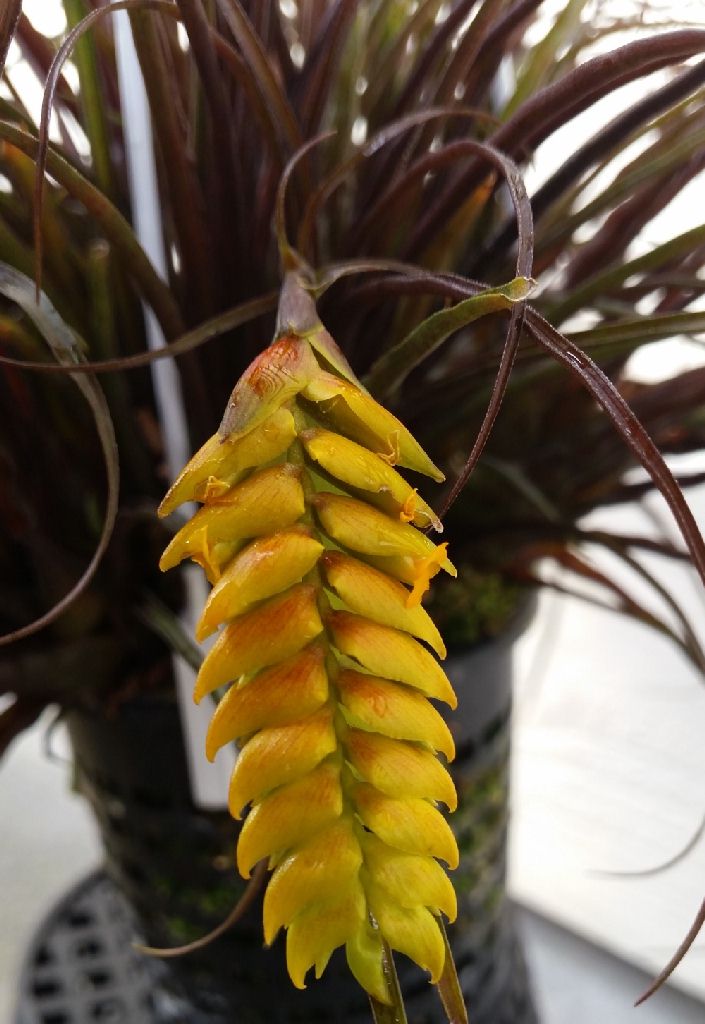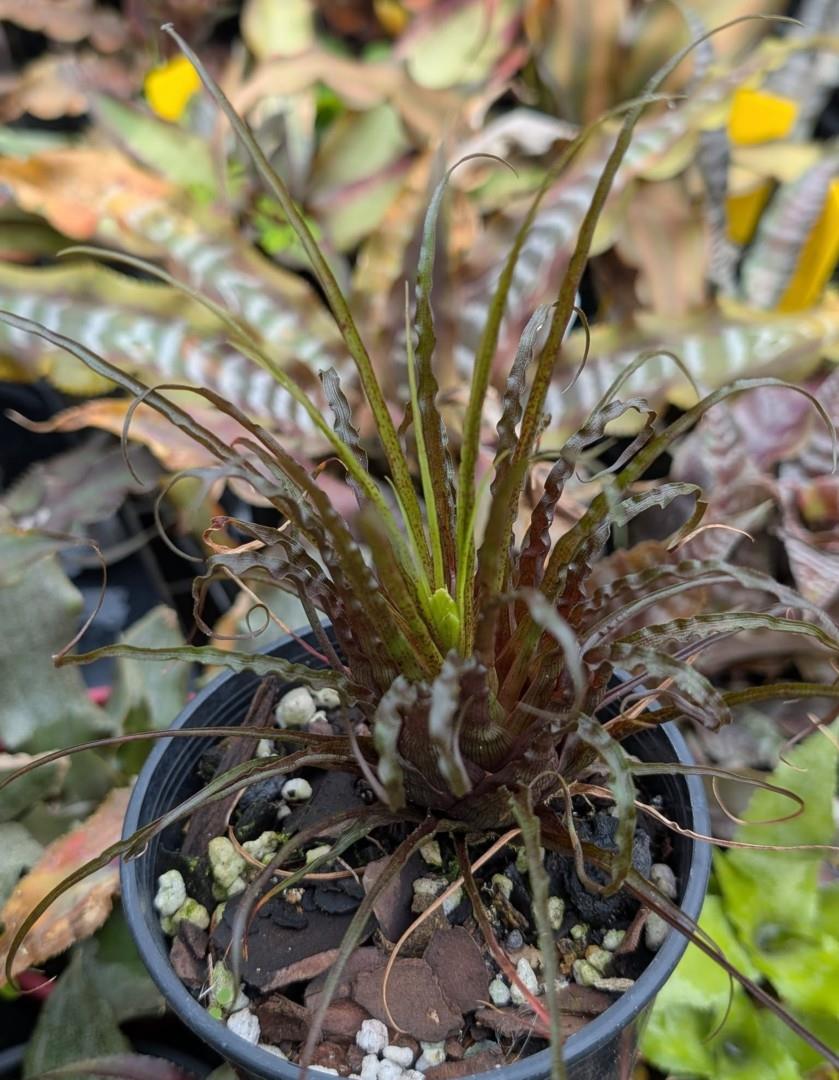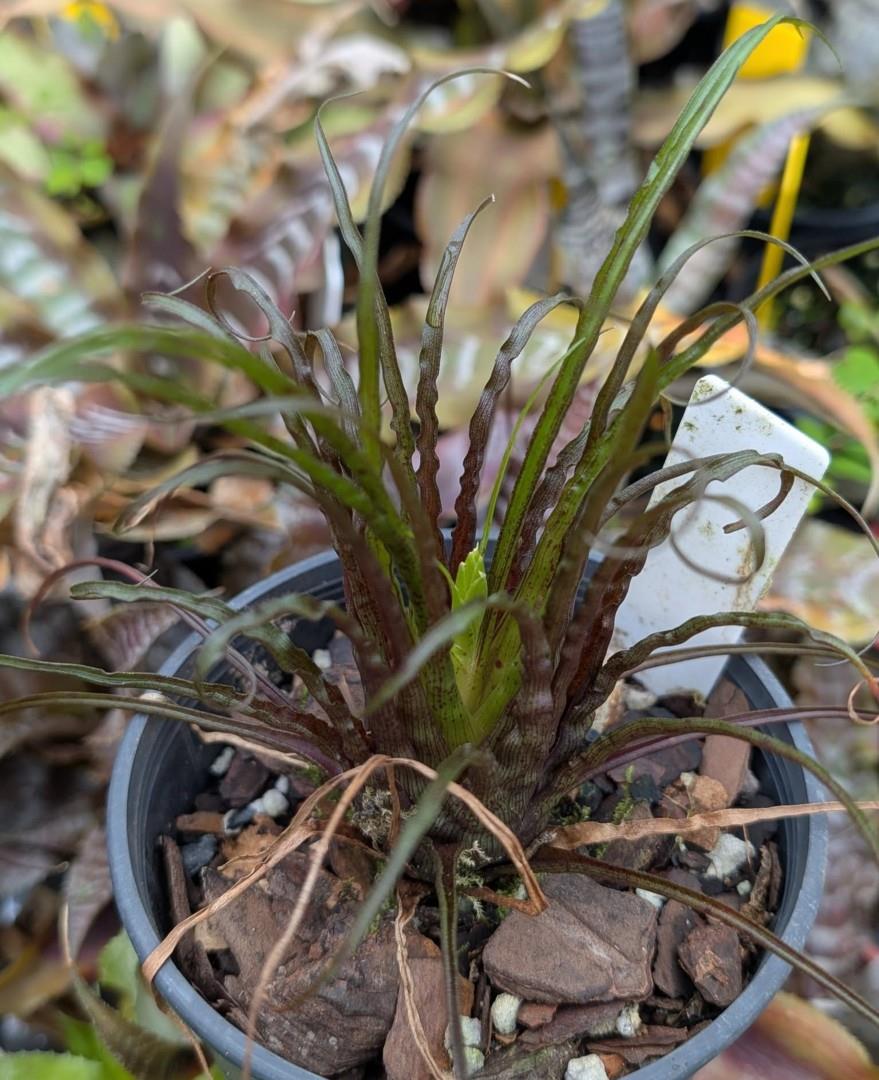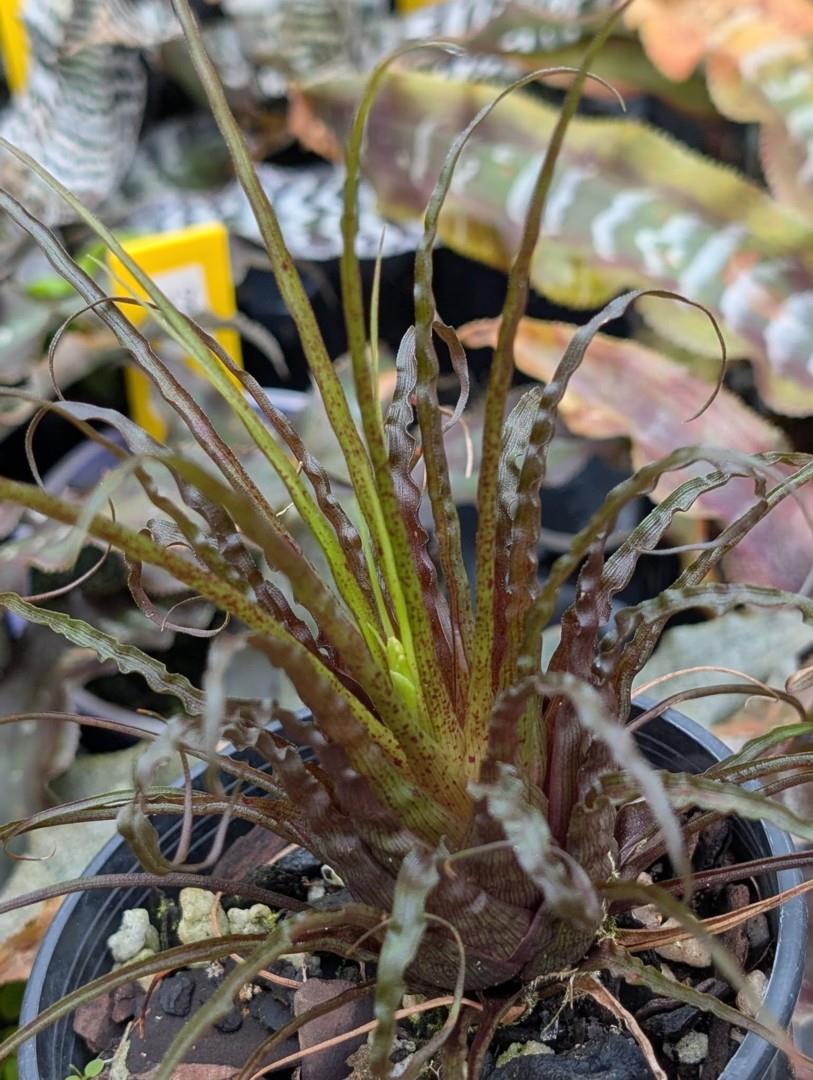






Desc from JBS 1982 p167-9 as var tustii – a variety not accepted See also R. undulifolia
PLANT: stemless, producing many offshoots at the base, flowering when only 10-15 cm high, seldom higher.
LEAVES: many, densely rosu1ate in a sub-bulbous rosette of up to 3 cm in diameter.
LEAF SHEATHS: large, spoonlike, distinct, up to 3 cm long and 1.5 cm wide, dark, leather-brown, with dark wine-red spots on the upper part, both sides densely lepidote.
LEAF BLADES: 5-10 cm long, 3-5 mm wide, narrow, involute, with strongly undulate margins, tapering into a subulate, recurved tip, dark green to dark-reddish brown, with wine-red markings or stripes, both sides lepidote, shorter or as long as the inflorescence.
INFLORESCENCE SCAPE: very slender, erect or slightly curved.
SCAPE BRACTS: imbricate, subfoliate, the basal ones with a long blade, the upper ones transform gradually into the floral bracts, olive-green to brownish, sparsely lepidote.
INFLORESCENCE: mostly simple, horizontally oriented to slightly decurved, up to 4 cm long, 2-2.5 cm wide, at anthesis, truncate at the apex (shape of the inflorescence rectangular,).
RHACHIS: visible, slender, somewhat geniculate, flattened, brown-lepidote, internodes about 3 cm long.
FLORAL BRACTS: horizontally spreading to recurved, boat-shaped, somewhat inflated, 1-1.2 cm long, 0.5 cm wide at the base (with the base covering the rhachis), lemon-yellow or orange-red, densely and finely brown or white lepidote on both sides.
FLOWERS: divergent, visible.
SEPALS: 5-7 mm long, asymmetric, ecarinate, coriaceous, acute, even sparsely lepidote.
PETALS: exceeding the sepals with broad-rounded, strongly recurved, orange petals. STAMENS & PISTIL: deeply included.
Type. Purdie s n (holotype K, GH photo), Ocana, Norte de Santander, Colombia, 1845.
DISTRIBUTION. Epiphytic in forest, 300-1800 m alt, Panama to Colombia.
PANAMA. DARIEN: Cerro de Garagara, Sambu Basin, 7 Feb 1912, H. Pittier 5653 {US); Cerro Pire, Aug 1967, Duke & Elias 13786 {MO, US). COLOMBIA. NORTE DE SANTANDER: Ocana to Convencion, 20 Sep 1946, Foster 1744 {GH). ANTIOQUIA: Amalfi, 22 Sep 1884, Lehmann XXI11 {G, GH photo); El Yarumal, Nov 1891, Lehmann 5300 {K). VALLE: Piedra de Moler, Rio Digua, Aug 1943, Cuatrecasas 14919 {GH).
Also epiphytic in a humid mist-forest at an altitude of about 1800 m, near Altaquer, Dept. Narino, in the southern part of Colombia.
The plant is also cultivated in the Botanical Garden of the University of Heidelberg under the number 52043, collected in the same region of Colombia by F . Gruber, Fusagasuga, Colombia.
Detail from Baker Handbook of Bromeliaceae 1889
6. GUZMANIA CRISPA Baker in Journ. Bot. 1887, 178.
Leaves 80-40 in a dense rosette, linear from a dilated base, 2-3 in. long, thin, recurved, much crisped, 1/6th in. broad at the base of the blade.
Peduncle 2-3 in. long;
bract-leaves small, adpressed, imbricated.
Flowers 6-15 in a dense distichous spike 0.5-1 in. long;
bracts green, broad ovate, minutely cuspidate, 0.25 in. long.
Calyx rigid, 1/6th in. long;
sepals free to the base, oblong, obtuse, much imbricated.
Petals not seen.
Capsule as long as the calyx.
Habitat New Granada; Ocana, Purdie ! Antioquia, Lehmann !